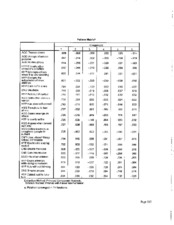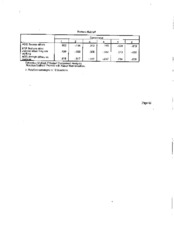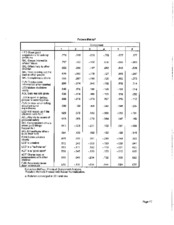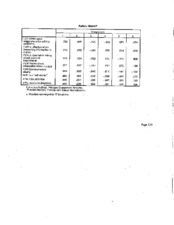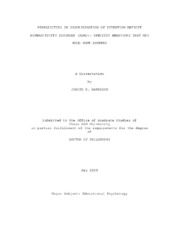| dc.contributor.advisor | Vannest, Kimberly J. | |
| dc.creator | Harrison, Judith R. | |
| dc.date.accessioned | 2010-07-15T00:12:27Z | |
| dc.date.accessioned | 2010-07-23T21:43:54Z | |
| dc.date.available | 2010-07-15T00:12:27Z | |
| dc.date.available | 2010-07-23T21:43:54Z | |
| dc.date.created | 2009-05 | |
| dc.date.issued | 2010-07-14 | |
| dc.date.submitted | May 2009 | |
| dc.identifier.uri | https://hdl.handle.net/1969.1/ETD-TAMU-2009-05-524 | |
| dc.description.abstract | Attention deficit hyperactivity disorder (ADHD) is a
source of diagnostic and intervention confusion and
uncertainty for practitioners and parents. Questions
creating some of the confusion were answered in a series of
three studies. The sample was parent and teacher behavioral
ratings for 389 children and 502 adolescents with ADHD and
3131 children and 3161 adolescents without ADHD in public
and private schools and mental health clinics in forty
states.
In the first study, data was derived from participant
T-scores on the Behavior Assessment System for Children (2nd
ed.) to evaluate the construct validity using first and
second order factor analyses. Sufficient construct
validity was established. In the second study, descriptive discriminant analyses
(DDA) and item level ANOVAs were used to investigate
whether behaviors that discriminate between the target
(i.e., ADHD) and comparison groups were associated with the
primary symptoms, comorbid conditions, functional
impairment, or some combination of the three. Analyses
were completed using subscale T-scores and individual item
scores from the target and comparison groups. Results were
compared to determine if the behaviors that discriminated
between the groups were consistent across developmental
stages and between parents and teachers as raters. Primary
symptoms, comorbid conditions, and functional impairment
explained the variance as rated by parents and teachers.
Primary symptoms were found to be the strongest
discriminators of children and adolescents as rated by
parents. Atypicality explained the largest variance
(72.25%) between children and learning problems explained
the largest variance (64.32%) between adolescents when
rated by teachers.
The third study was a literature review of
intervention studies to increase the academic performance
of youth with ADHD in light of the statistical significance
controversy. Fifty-one single subject and group design studies of academic, behavioral, multimodal and parent
training were found. Both sides of the statistical
significance controversy were summarized. The method of
result reporting for 23 group design studies was
investigated. Seventy-seven percent of the studies
reported results as ?significant? with 26% reporting effect
sizes. Researchers are encouraged to report effect sizes
and explicitly compare results to previous studies in order
to establish replicability for ease of educator
interpretation. | en |
| dc.format.mimetype | application/pdf | |
| dc.language.iso | eng | |
| dc.subject | Attention Deficit Hyperactivity Disorder | en |
| dc.subject | ADHD | en |
| dc.subject | statistical significance | en |
| dc.subject | Behavior Assessment System for Children | en |
| dc.subject | BASC-2 | en |
| dc.subject | academic interventions | en |
| dc.title | Perplexities in Discrimination of Attention Deficit Hyperactivity Disorder (ADHD): Specific Behaviors that may hold some Answers | en |
| dc.type | Book | en |
| dc.type | Thesis | en |
| thesis.degree.department | Educational Psychology | en |
| thesis.degree.discipline | Educational Psychology | en |
| thesis.degree.grantor | Texas A&M University | en |
| thesis.degree.name | Doctor of Philosophy | en |
| thesis.degree.level | Doctoral | en |
| dc.contributor.committeeMember | Thompson, Bruce | |
| dc.contributor.committeeMember | Reynolds, Cecil R. | |
| dc.contributor.committeeMember | Fournier, Constance | |
| dc.contributor.committeeMember | Webb-Johnson, Gwendolyn | |
| dc.type.genre | Electronic Dissertation | en |
| dc.type.material | text | en |


